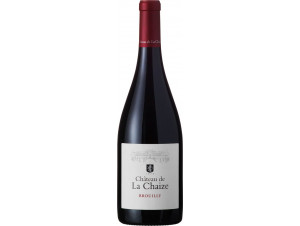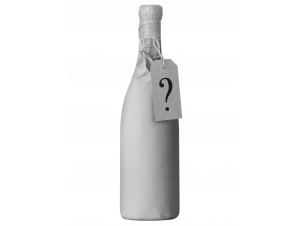You have no items in your shopping cart.
Wine Beaujolais et Lyonnais
A hilly landscape, a great geological wealth, a wine-growing history that goes back to antiquity: Welcome to Beaujolais! The Beaujolais is a land of choice for the Gamay grape variety, and far from being simple, it has everything to surprise you. Its terroirs, marked by a great typicity, offer wines with a wide aromatic palette and rich and complex profiles. Read more on Beaujolais et Lyonnais
-
Top Selling-27%
-
Top Selling-27%
-
Top Selling
- -25%
- -25%
- -25%
- -27%
- -27%
- -25%
- -25%
- -21%
- -20%
- -25%
Region Beaujolais et Lyonnais
The Beaujolais wine region is festive and famous
Who doesn't know the famous Beaujolais nouveau, expected and celebrated every year in November? Much appreciated but sometimes criticised, this Beaujolais Nouveau is not the only wine that represents this wine region. Indeed, spread over granite soils in the north and limestone in the south, on more than 22,000 hectares, this vineyard produces 97% red wines and 3% white wines. The grape variety most used for red wine is Gamay, the king and even emperor of the region. It is often used alone and especially in all the red wines produced in the region. There are 12 appellations d'origines contrôlées, two of which are regional and ten communal.
Located mainly in the Rhône, around Villefranche-sur-Saône and Lyon, this vineyard also extends to the Soane et Loire. You can admire its vines between Lyon and Macon. Although located in the Rhône, this wine area is administratively attached to the Burgundy region. The wines of Beaujolais are simple and tasty. They are classed as the "small wines" of France. They are very popular with the general public as they are of high quality but relatively affordable.
Take the time to enjoy these aromatic wines with relish and they are ideal to accompany your meals with family and friends.
History of the Beaujolais wine region
The cultivation of vines in this region dates back to ancient times. Its origins are not known exactly, but there are references to a very ancient grape variety, the allobrogica. It is thought to be the ancestor of pinot noir. Later, during the barbarian invasions, the Gouais Blanc grape variety was imported and crossed with Pinot Noir. This gave rise to the Gamay Noir and the Chardonnay Blanc. We can therefore consider that the Beaujolais region constitutes a major history of French viticulture.
In the Middle Ages, viticulture survived and the wine trade began to take a certain interest. But it was not until the 17th century that the Beaujolais vineyards began to expand. It was heavily marketed on the Lyon market, and later, after the heyday of the railways, on the Paris market.
Since April 29, 1930, and still to this day, the Beaujolais vineyard is administratively attached to the Burgundy region. At the time, this seemed logical and interesting because of the reputation of the Burgundy vineyard. The first A.O.C. was decreed on 11 September 1936. Chenas, Chirouble, Fleurie, Moulin à vent and Mourgon were granted A.O.C. status. The others will follow quite quickly. Finally, one cannot present the history of Beaujolais without talking about the Beaujolais Nouveau festival. Since 1985, it is really celebrated in several regions of France. It usually falls on the third Thursday of November. This appellation first appeared on 13 November 1951 in a note allowing the winegrower to sell Beaujolais Nouveau wines before 15 December of the year as specified by law.
Characteristics of the Beaujolais vineyard
Dominated by the Monts du Beaujolais at an altitude of 1,000 metres, the vineyard extends over land dotted with hills and slopes where the vines are planted at an altitude of between 180 and 550 metres. Numerous rivers run through the region and flow into the Saône. They favour the irrigation of the soil and are one of the major characteristics of Beaujolais viticulture. The climate is continental and temperate. The Massif Central, to the west, protects the vineyards from the winds and oceanic disturbances.
This great variety of soils gives the wines produced their characteristics. The schist and granite soils, rather sandy, give the wines a salmon pink colour. The main grands crus grow on these soils. For example, the clayey-limestone soils give the A.O.C Beaujolais. The silty-clay soils allow the production of lighter wines.
Don't hesitate to follow the Beaujolais wine route between Lyon and Mâcon, to get to know this very special terroir. You can taste and discover different red and white wines.
The grape varieties of the Beaujolais
The Beaujolais is a rather atypical wine region. It uses only two grape varieties in majority. Gamay represents 97% of the vineyard and produces the red wines. Chardonnay represents the remaining 3% and produces the white wines. Gamay has medium-sized berries and is bluish-black in colour. It is a juicy grape variety that produces fruity red wines with little tannin. It gives the wines an intense, red colour. Chardonnay reveals small yellow berries that produce light white wines. They are characterised by their finesse and freshness. One can distinguish aromas of hazelnut and coffee.
The appellations of the Beaujolais region
The Beaujolais wine region offers us 12 A.O.C. (Appellation d'Origine Contrôlée). First of all, there is the Beaujolais regional appellation, which includes the Beaujolais Nouveau. There is also a sub-regional appellation, Beaujolais-Villages. And finally 10 communal A.O.C. also called Crus de Beaujolais. Let us highlight some of these A.O.C.
Brouilly
Brouilly has been an A.O.C. since 1938. It is produced on 1300 hectares and more than 59000 hectolitres are produced per year. These are still red wines. They are all different depending on where they are produced, but on the whole they are distinguished by aromas of red fruit, cherry and blackcurrant. To the eye, their colour is ruby red with purple hues. On the palate, they are supple and round. Brouilly is best enjoyed with white meats, grilled red meats and combinations of charcuterie and cheese.Chirouble
Chiroubles are soft and fruity red wines. A.O.C. since 1936, Chiroubles have a light ruby red colour. On the nose, they are distinguished by scents of violets and peonies and accents of fruit. They are produced on 359 hectares for more than 16000 hectolitres per year. You can enjoy them with light cheeses, poultry and charcuterie. They are recommended for new wine lovers, as they are light and fruity.Fleurie
Fleuries red wines have been A.O.C. since 11 September 1936. The average annual production is 32,000 hectolitres. They are produced from more than 800 hectares of vines. Their sugar content is 3 grams per litre, which makes them pleasant and tasty. They are fruity and spicy red wines with aromas of blackcurrant and vine peach to which are added notes of rose, violet and iris. Their colour is red with purple hues. Enjoy them, like Chiroubles, with charcuterie, white meat dishes and cheese platters, only the mild and slightly spicy ones.Juliénas
Juliénas is an A.O.C. renowned for its robust and fruity wines. On the nose, one enjoys the scents of fruit, flowers and spices. Their colour is purplish and quite dark. These wines are ideal to accompany your red meats and game as well as your white meats in sauce. Juliénas is produced on more than 600 hectares for an average production of 22 000 hectolitres per year. This A.O.C. was decreed on 11 March 1938.Morgon
The Morgon Appellation d'Origine Contrôlée has been established since 1936. It is an A.O.C. which produces more than 46 000 hectolitres per year of red wines. They can be recognised by their garnet colour. They are robust and full-bodied wines with fruit and kirsch aromas. They are the perfect accompaniment to roasted red meats, poultry and strong cheeses.Moulin-à-vent
Moulin-à-Vent red wines are produced on 644 hectares. More than 25,000 hectolitres are produced each year. They are full-bodied and powerful wines, which become more and more elegant with age. To the eye, they have a deep ruby colour. On the nose, there are notes of cherry, blackberry and blackcurrant and aromas of violet. Over the years, you can also enjoy the scents of Musk and Truffle. Enjoy them with red meats, game and very strong cheeses.
Good to know
Winemakers
Listed 490 winemakers
Production
1.2 million hectolitres of red wine (99%).
Area
.
Soil and subsoil
Unusual geological characteristics: clay-limestone and sandstone soil in the south, light crystalline, granite and acidic soil in the north
Grape variety
Reds and rosés : 1 grape variety for all appellations: Gamay Noir à Jus Blanc. Chardonnay used for all white wines.
Whites : .
Beaujolais et Lyonnais appellations








































 TWIL - Achat de Vin
TWIL - Achat de Vin


